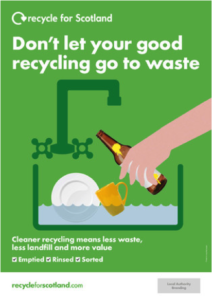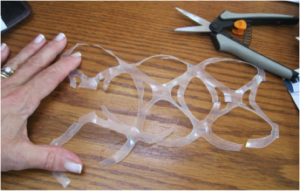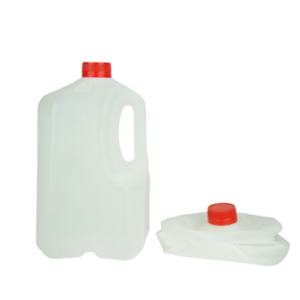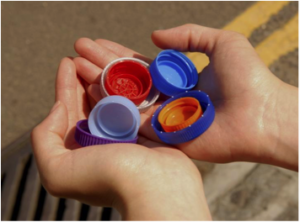WHAT CONTAMINATES OUR BEST INTENTIONS?
PERSPECTIVE
Maybe you’ve heard of “aspirational recycling,” which is when good people think they’re doing the right thing (aspiring to right action) by putting certain waste material into a recycling container because they think or expect that it is – – or should be – – included there. This usually applies to items that are less obviously NOT recyclable, such as foam pieces, ceramics, plastic plant holders, plastic straws, CFL bulbs, plastic or synthetic corks, and containers with food particles still attached. (See my handout, “What Goes Where” in the Resources section of this blog.)
Noble as this wishful thinking might be, it can often lead to contamination of not just the immediate items but also of an entire batch – – usually farther down the line and out of sight of the aspirational person, who will likely continue to do the same until learning of their error.
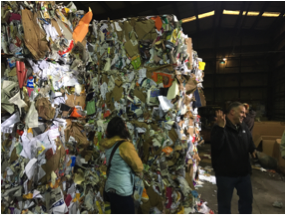
Operations Manager, Northwest Recycling
I have seen the giant cubes of compressed materials at collection centers like Northwest Recycling in Bellingham (1419 C Street), and they are impressive: separate but stacked solid blocks of rigid plastics, aluminum cans, tin, paper, all ready for transport to destinations that will pay something for this recycling—or not. You see, any of these large “Borg”-like cubes can be inspected at their eventual destination and rejected because of even a small about of material that shouldn’t be in there. At that point the entire cube most likely gets sent to a nearby landfill to join all the other unrecycled junk wasting away there.
And the best intention of the aspirational recycler is thwarted, not to mention taking with it a lot of otherwise perfectly recyclable items.
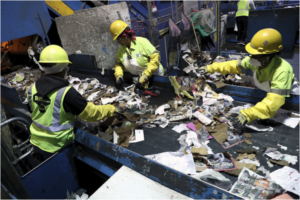
The industry that processes collected recycling is operating on a shoestring these days and has limited capacity to thoroughly separate out all improper items from the huge streams of waste that arrive at any given facility every day. They do what they can, but some contamination is just not recoverable, especially food waste, with oils and grease that remain on otherwise recyclable materials. Sadly, increasing numbers of recycling facilities are closing of late, due to the evaporation of markets for these materials, again largely due to the effects of contamination.
(Back in 2015 China imported almost half of the world’s plastic waste, according to Institute of Scrap Recycling Industries figures, and they once allowed a 15% contamination rate. But they now insist on a  minuscule .05% threshold, which is very hard to meet, especially for single-stream recycling communities. See also my earlier blog on this China Dynamic.)
minuscule .05% threshold, which is very hard to meet, especially for single-stream recycling communities. See also my earlier blog on this China Dynamic.)
The recycling industry is in some trouble, yes, and unless we see some kind of large culture shift in attitudes and actions on the part of curbside consumers, who account for much of the contamination, things are likely to get worse before they get better. Commercial settings contribute to contamination as well, and in large volume – – if they recycle at all – – but, on a hopeful note, a top-down business style can also be helpful, IF a well-placed or courageous executive gets convinced of the value in reducing contamination. If you know any such executives, check them out on their attitudes (hint: better to ask questions than make demands) and suggest they could act where they have power in the best interests of the planet more than immediate, but short-sighted profit.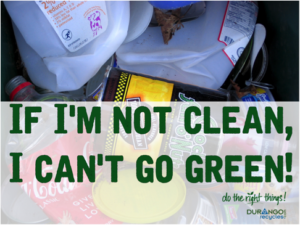
I predict the recycling industry will see a bottoming out soon, and perhaps you will have to read more distressing feature stories on the spread of landfill horrors. But hopefully (again) this will lead to a new, more creative and effective response – – from both consumers and the industry – – that rebuilds a more sustainable recycling business model. It seems to be a distressing aspect of human nature that we don’t collectively respond to impending crises until it’s almost too late (or, perhaps as with climate disruption, already too late).
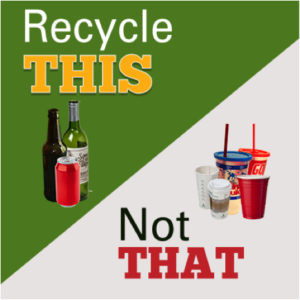 Believe me, we want to help the recycling industry thrive, but it may not even survive unless more individuals take more responsibility for their personal waste streams. (See also my most previous blog “On At Least Trying.”)
Believe me, we want to help the recycling industry thrive, but it may not even survive unless more individuals take more responsibility for their personal waste streams. (See also my most previous blog “On At Least Trying.”)
PRACTICAL
The Good News is that preventing recycling contamination is not that hard. First off, the professionals all advise: “When in doubt, throw it out.” So if you’re done with something but not sure where it goes, and don’t care to find out more about the best practice for its best diversion, just send it to the landfill, so that it can’t possibly contaminate other recycling. “Aspirations” and wishful thinking are all well and good, but we’re at a place where contamination of the whole is more important to prevent than recycling any questionable individual items.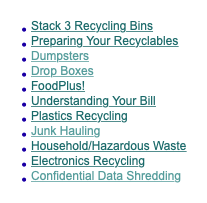
 And the web is also very useful. For instance, our regional Bellingham
And the web is also very useful. For instance, our regional Bellingham
waste collector, SSC, has a reasonably informative website that will also give instructions on most things (including contaminants):
http://www.ssc-inc.com/recycling_residential.php
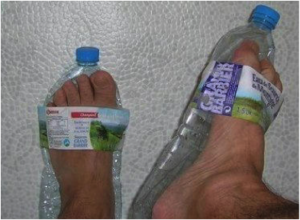
Almost any issue you might wonder about has likely already been considered by knowledgeable folks who have created easily searchable and probably insightful posts just waiting for your eyeballs. There are also an amazing number of sites that suggest creative ways to repurpose items that might otherwise go “away.” Take a looksee and you might be intrigued with what secondary uses can be made of things that you might regularly throw “away.”
And chances are that somewhere in your circle of friends and neighbors is a person who has learned enough to be helpful with questions you might have. Don’t be timid in making this person (or persons) a good resource for the often-complicated decisions that we face in conscientious waste diversion efforts.
Now for some particulars. Here’s a list of some typical contaminants. (I adapted this from a similar post by the Colorado group EcoCycle.)
A “Dirty Dozen” of
(Curbside) Recycling Contaminants
-
NO food particles ON or IN recyclable material
Otherwise recyclable items become garbage when they carry food remnants.At least rinse out all material to be recycled. (Peanut butter cans are the worst!)
-
NO plastic bags or plastic wrapping of any sort in any curbside bin

https://twitter.com/DanversDPW
 Bags and their ilk are bad news in recycling machinery, BUT they can be collected (if clean and dry) and taken elsewhere. Check your local grocery store for containers that take soft (“film”) plastics. (Or ask them to, if they don’t yet!) Once you start watching and recycling your soft plastic, you’ll likely be amazed at how much there is of it in daily living. Plastic packaging is everywhere (including in the oceans, big time).
Bags and their ilk are bad news in recycling machinery, BUT they can be collected (if clean and dry) and taken elsewhere. Check your local grocery store for containers that take soft (“film”) plastics. (Or ask them to, if they don’t yet!) Once you start watching and recycling your soft plastic, you’ll likely be amazed at how much there is of it in daily living. Plastic packaging is everywhere (including in the oceans, big time).
SIX-PACK RINGS can be cut up and combined with other “soft” plastic recycling (not curbside, though).
-
NO materials held IN plastic bags
 The bags are bad enough, but when contents
The bags are bad enough, but when contents
can’t be seen and assessed as appropriate or not
by pick-up agents, the whole bagful
might well get thrown “away” and not recycled at all.

-
NO loose shredded paper
Loose shredding causes a dangerous mess in the sorting machinery! Bag it up in brown paper sacks, tape it shut and use a marker to write “Shredding” on the outside. Only then is it okay to put with other Mixed Paper. (Or check with nearby composters to see if they want it.)
-
NO scrap metal
Most metals can be recycled separately (not curbside), including bottle caps and screw-on wine caps.
-
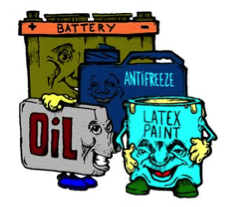
NO hazardous waste
PLEASE take hazardous wastes to the local toxic disposal facility. Learn where this important community resource is! (Ours is right up near the Bellingham Airport.)
-
NO non-recyclable plastics
Such as plastic pumps, tableware, utensils, toys, plant boxes, and any containers that held potentially hazardous products such as motor oil, antifreeze, paints, pesticides, etc. (See also #2 above.)
-
NO loose caps and NO caps on glass containers
Small, loose caps will jam the sorting machinery but plastic containers can (for our region) be recapped after they are flattened. Metal lids and caps from glass containers can be put with other metals.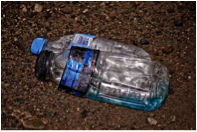
-
NO sealed containers with any quantity of liquid
-
NO ceramics or non-recyclable glass
Such as plates and bowls, mirrors and windows.
-
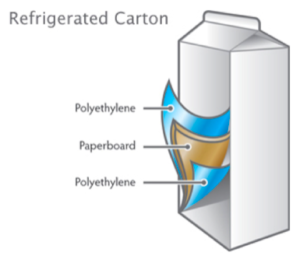 NO insulated paperboard containers
NO insulated paperboard containers
The insulated paperboard boxes that carry most refrigerated milk, juice, frozen foods (including ice cream) are no longer wax-lined, but have multiple layers of nasty plastic (which is why they insulate – – and why they can’t even be composted).
-
NO shelf-life, non-refrigerated boxes that held liquids
Often made by and called “Tetra” paks, these have a variety of materials that make them non-recyclable (and non-compostable).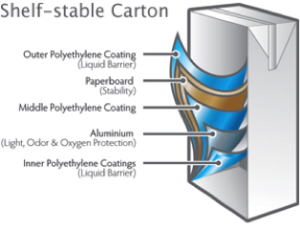
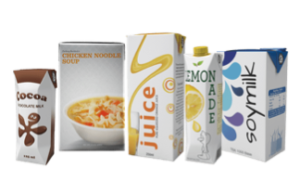
Bonus No-No: Plastic Hot or Cold Cups!
Even so called “compostable” cups are generally plastic-lined and must be trashed (some expensive new “eco-cups” notwithstanding). They sometimes may be labeled “compostable” (technically true, given enough time), but at least our local city composter doesn’t want them (or “compostable” tableware) from curbside pick-up because their process isn’t long enough to break them down.
See more about cups here: http://tylertalkstrash.com/tag/are-dixie-cups-compostable/
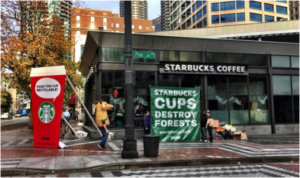
Much better to bring your own reusable cup (and reusable shopping bags!) anyway!
There’s a battle being waged these days to get disposable cup manufacturers to switch to using insulating materials that can avoid the landfill. Perhaps the numerous communities who have already outlawed plastic shopping bags will take the next step and do the same with plastic cups (and plastic straws).
If you patronize ✯Bux and take cups from them, you might want to read up on this dilemma, whereby BILLIONS of these single-use cups go into the landfills every year (despite the corporate goal to provide only recyclable cups by 2012). See: https://ecowarriorprincess.net/2016/11/starbucks-bucking-sustainable-practice-non-recyclable-disposable-cups-destroy-forests
FINER POINT
So what specifically are the problems caused by recycling contaminants? you might ask.
![]() (Thanks to the Rubicon blog for inspiration on this. Rubicon Global’s entire mission statement is “To end waste.”) See https://www.rubiconglobal.com/blog-recycling-contamination/
(Thanks to the Rubicon blog for inspiration on this. Rubicon Global’s entire mission statement is “To end waste.”) See https://www.rubiconglobal.com/blog-recycling-contamination/
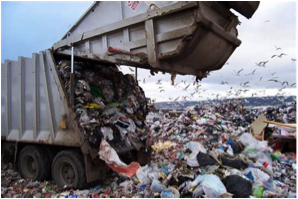
• Costs increase, or landfill, ho!
When there are contaminants in a load of that includes viable materials, it might all be sent to the landfill. Extra costs to separate out the contamination add up, and reduce the operation’s bottom line.
• Machinery complications
Plastic bags can, for instance, wrap around the shafts and axles of a sorting machine and waste time and energy, not to mention endangering workers who have to remove them.
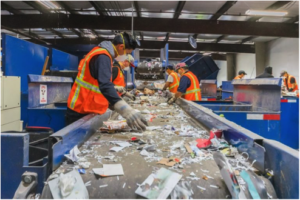
• Unhealthy work environments for personnel
Sorters can be exposed to hazardous waste, diseases and other physically dangerous items.
• Lowered economic value
Contaminants compromise the quality of recyclables, lessening market value, so the local recycling program may face increased costs (and/or decreased income).
• Damaged relationships, on both ends
A recycling facility can get weary of contamination and refuse service to repeat offenders (so that all their otherwise recyclable goods will likely go to landfills). And if the facility gets a bad contamination reputation from buyers, that also reduces its viability as a business.
Last Word:
If you believe that all life is interconnected, as I do, then building better habits around waste diversion can be seen as a spiritual practice – – a discipline, even. It’s worth it! We are part of our own waste stream. There is no “away.”
Many thanks for your good efforts!




